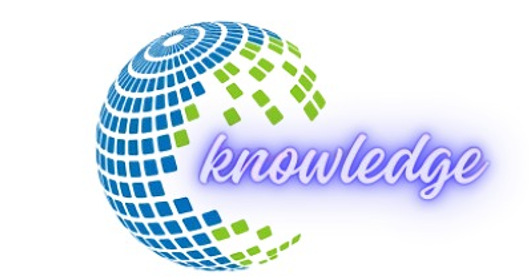We’ve all seen the headlines: a viral video of a tantrum on a plane, a tone-deaf post from a luxury resort during a crisis, or a dangerous stunt that goes horribly wrong. The “influencers gone wild” has become a staple of modern internet culture. But these incidents are more than just fleeting scandals for our entertainment. They are the visible symptoms of a broken system—a perfect storm of perverse incentives, psychological pressure, and a culture that rewards extremity over substance.
This isn’t just about individual moral failings; it’s about what happens when human identity is fused with a monetisation online brand.
The Engine of Chaos: The Algorithmic Incentive Structure
At the core of the “wild” behaviour is the architecture of the platforms themselves. Algorithms don’t reward nuance, kindness, or responsible behaviour. They reward engagement—and nothing drives engagement like strong emotion Influencers Gone Wild.
- Outrage is a Commodity: A controversial take, a public feud, or a violation of social norms generates comments, shares, and reaction videos far more effectively than a post about a pleasant day at the park. The system financially incentives chaos.
- The Novelty Tax: With millions vying for attention, simply being “good” or “pretty” is no longer enough. Influences face a “novelty tax” where they must constantly up the ante—more extreme stunts, more lavish displays of wealth, more intimate personal revelations—to maintain relevance. This inevitably pushes some across the line of safety and decency.
Beyond the Obvious: The Subtler Forms of “Going Wild”
While public meltdowns and dangerous pranks grab headlines, more insidious forms of self-destruction are playing out quietly.
1. The Psychological Implosion
The line between the personal self and the brand persona becomes blurred, leading to an identity crisis. The constant pressure to be “on,” to project perfection, and to face relentless public scrutiny is a recipe for burnout, anxiety, and breakdowns. What we often label as a “wild” moment is often a very human person cracking under an inhuman pressure cooker. The recent trend of “de-influencing” and videos discussing the misery of influencer life are the direct fallout of this phenomenon.
2. The Financial House of Cards
Many influencers project an image of immense wealth, but this is often a carefully curated facade. Behind the super cars and designer hauls can lie a mountain of debt, leased assets, and brand-sponsored props. The “wild” behaviour here is a financial gamble—living far beyond one’s means to maintain the illusion necessary for brand deals. When the deals dry up, the entire facade collapses, leading to very public financial ruin.
3. The Ethical Vacuum: Stunt Culture
In the quest for vitality, some influencers have moved into ethically murky territory. This includes:
- “Prank” Culture: What begins as harmless fun escalates into public harassment, destruction of property, and genuine fear for “victims.”
- Exploitative “Altruism”: The trend of “voluntarism” or giving to the homeless for content (dubbed “pain porn”) turns human suffering into a backdrop for a personal branding opportunity. This commodification of charity is a profound moral wildness.
- Conspiracy Peddling: As authentic niches become saturated, some influencers turn to promoting conspiracy theories or “wellness” misinformation, creating a wild and dangerous echo chamber for their followers, all for the sake of a dedicated, algorithm-friendly community.
The Ecosystem of Enablers
The influencer doesn’t operate in a vacuum. They are surrounded by a support system that often fuels, rather than curbs, the destructive behaviour.
- Management Teams: Often paid on a commission basis, their incentive is to keep the client relevant and posting at all costs. They may push for more extreme content and shield the influencer from constructive criticism.
- Brands: Companies are complicit when they prioritise reach over reputation. They will drop an influencer after a scandal, but often turn a blind eye to the toxic content that builds the engagement they covet before the scandal breaks.
- The Audience: We, the consumers, are the ultimate enablers. We gawk, we share, we comment with angry emojis, and we make the scandal trend. Our schadenfreude is the oxygen that fuels these fires.
The Inevitable Reckoning: Cancel Culture vs. Consequence Culture
The standard cycle is now familiar: outrage, cancellation, a tearful apology video, and often, a quiet return. But is this effective?
- “Cancel Culture” is often performative and short-lived. It lacks a framework for genuine accountability and redemption.
- What’s needed is a shift to “Consequence Culture,” where actions have lasting, tangible outcomes. This means:
- Platforms enforcing their own terms of service consistently, not just creatively.
- Brands conducting deeper due diligence before partnerships.
- Audiences rewarding authenticity and sustainability over shock and awe.
Conclusion: The Human Cost of a Human Brand
The spectacle of the “influencers gone wild” is a cautionary tale for the digital age. It shows us what happens when we build an economy that prizes attention above all else. The meltdowns, the scandals, and the implosions are not just the failings of a few individuals; they are the logical endpoint of a system that asks people to turn themselves into products.
The next time you see an influencer “go wild,” look past the meme-able moment. See it for what it often is: a system breaking a person, and the terrible, fascinating, and sometimes tragic result of that breakdown.



